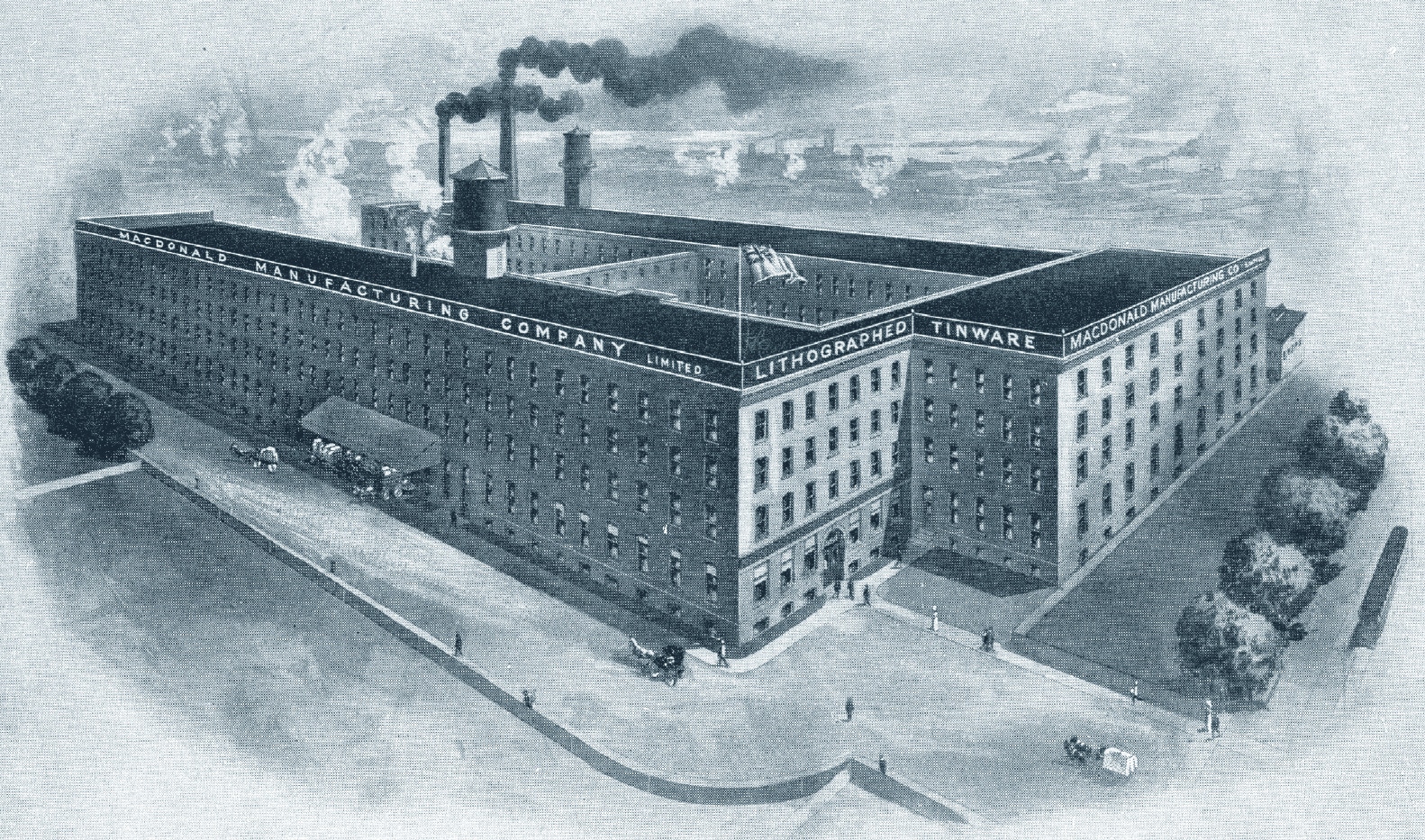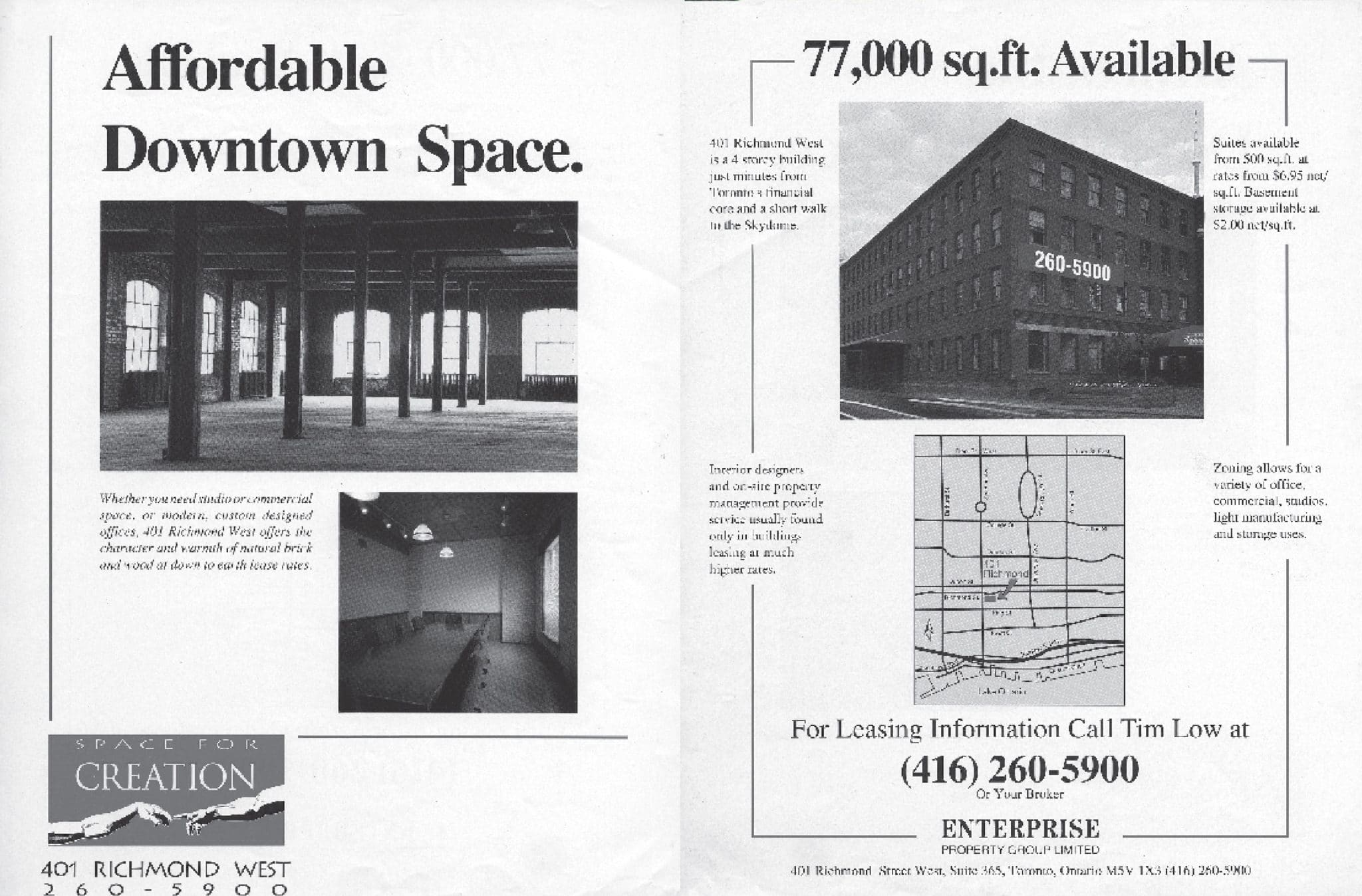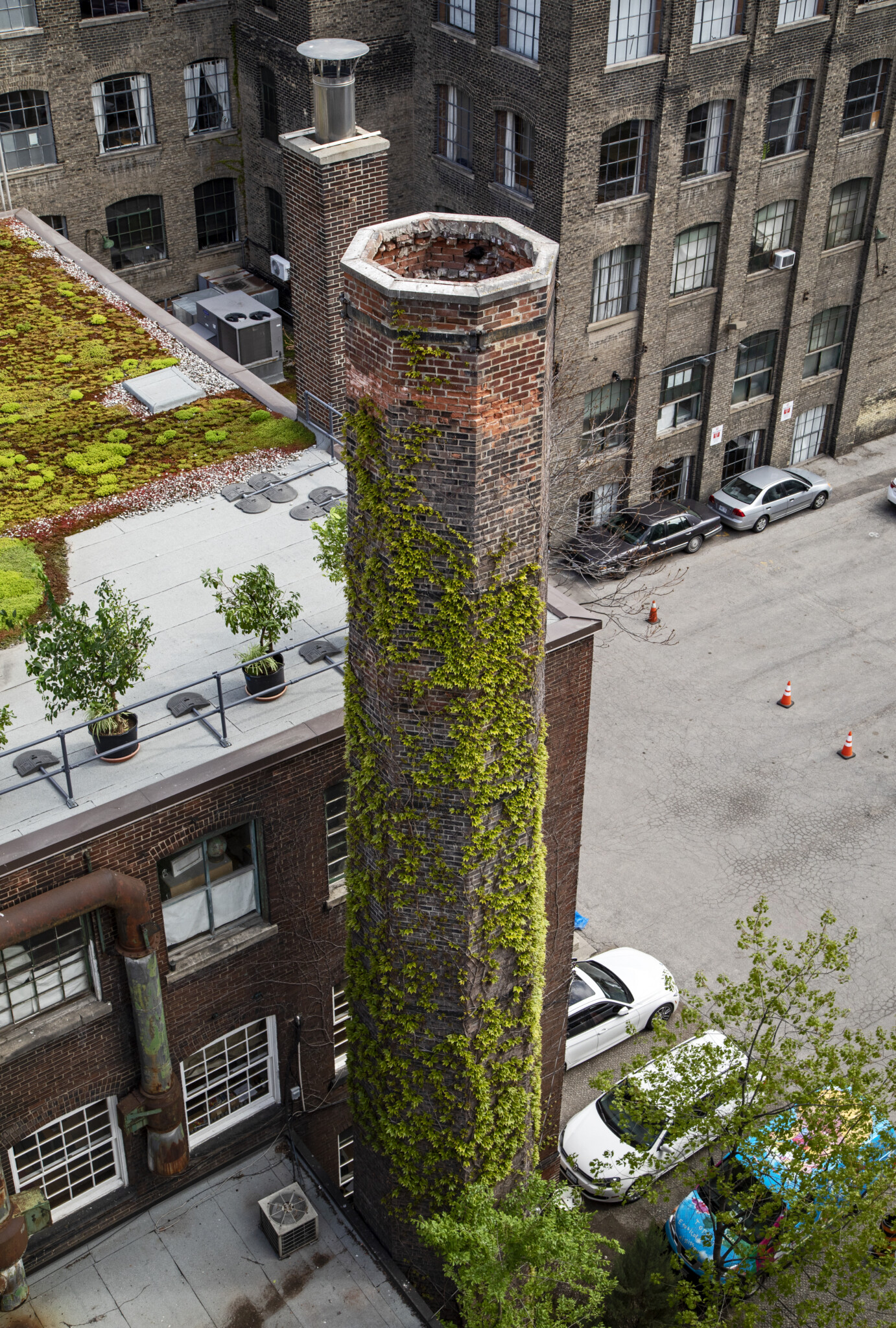
A History of Artistry
Macdonald Manufacturing Company
The Macdonald Manufacturing Company is widely held to be the first and finest manufacturer of lithography on tinware in Canada. The rooms and corridors of what is now 401 Richmond Street West once echoed with the hum of industry — gears turned and hammers rang. Several times a day the big steam whistle would blast, announcing starting times and quitting times, and every hour at the hour it kept the whole community in check. Deliveries were made by a one-horse wagon four times daily, distributing top-quality wares to Toronto and beyond.
The construction of what would become 401 Richmond Street West occurred in several stages between 1899 and 1923.
Plant 90

The stock market crash of 1929 set in motion a series of events that prompted the sale of the Macdonald Manufacturing Company to the Continental Can Company of Canada in 1944. Known then as ‘Plant 90’, Continental continued operations until 1967.
Surviving the Decline

It was a difficult time for 401 Richmond between 1967 and 1994. The neighbourhood was run-down as industry moved out of the downtown core to the suburbs. 401 Richmond was neglected: thefts and break-ins were not uncommon, ownership switched hands several times, and renovations inside the building covered up many of the original features. The garment district was much quieter then, with few amenities in the vicinity. Building vacancies increased, and property owners demolished old buildings, replacing them with parking lots.
Zoning Out

During this time, 401 Richmond was zoned as industrial, which placed limitations on potential uses for the space. While it was about 40% occupied, much of the building was being used for warehousing or storage. Some spaces were used for offices and artist studios, forming the early stages of the mixed-use quality the building has fostered into today, but with little sense of community.
401 Richmond Reborn
Despite wide-spread scepticism and the biggest real estate market slump since the Great Depression, Margie Zeidler had a vision for how to breathe new life into 401 Richmond. As a board member then for Toronto Artscape, Margie was acutely aware of the major shortage of space for artists in the downtown area.

401 Richmond models itself on the ‘three C’s’ of Commerce, Culture and Community, three key components identified by the 401 team that foster social wealth, each one supporting the others. George Baird, former Dean of the Faculty of Architecture at the University of Toronto, has called this strategy enlightened micro-capitalism.
It’s an idea that you can create enterprises that involve a lot of people, none of whom have a lot of capital, and modulate the cash flow arrangement to allow people to get a foothold. It’s a very creative economic and urban activity and a very precedent-setting one.
George Baird, October 2005
A Village in a Box

401 Richmond was partially leased when it was purchased in 1994. A mix of tenants were present, but they were segregated, cut off from each other by bolted doors and cold hallways. The regeneration plan envisioned instead, a dynamic mixed-use space, based on a neighbourhood model where people could get all that they needed under one roof (a ‘Village in a Box’ as was coined in a 1998 article by lawyer and 401 tenant Michael Cochrane). The mix would include both for-profits and not-for-profits, with a heavy focus on the arts, creating an environment that could incubate smaller organizations.








